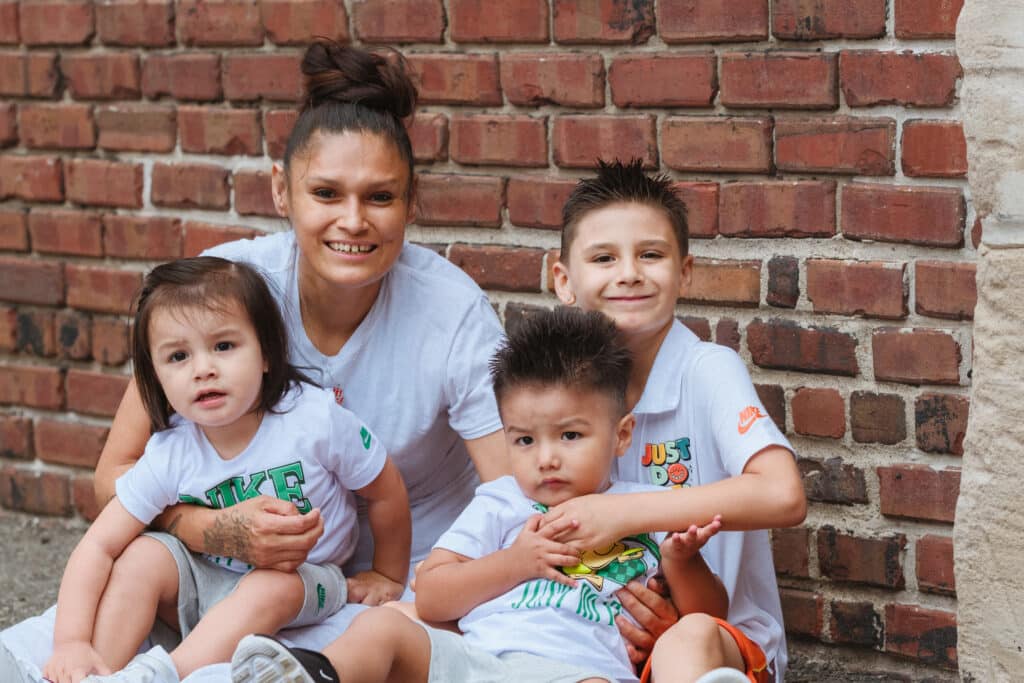Starting October 22, 2025, the Minnesota Department of Children, Youth, and Families is being forced to stop processing Supplemental Nutrition Assistance Program Benefits (SNAP), or food stamp applications, because of the federal government shutdown. As a result, nearly half a million Minnesotans will not have the food they need to feed themselves and their families starting in November. Many fear this loss is just the first domino to fall in the elimination of a series of assistance programs that provide life-sustaining resources, which increasing numbers of families rely on to meet their basic needs.

What is SNAP?
The Supplemental Nutrition Assistance Program (SNAP) provides monthly food benefits to help low-income families and individuals afford groceries. Funded by the United States Department of Agriculture (USDA) and administered by the Minnesota Department of Children, Youth and Families (DCYF), SNAP is a life-sustaining resource that many families rely on to meet their basic food needs.
The maximum monthly benefit for a family of four in Minnesota is $994 per month. This is based on a household’s net income.
SNAP by the numbers
- 41 million individuals, children, seniors, and adults with disabilities (12% of the United States’ total population) used SNAP benefits in the United States in 2024 to meet their nutritional needs.
- In 2024, 453,900 Minnesota residents (nearly 8% of the state’s population) used SNAP benefits, with 63% of these recipients being families with children.
- 285,957 families with children, or the equivalent of U.S. Bank Stadium seats filled four times over, participated in SNAP in Minnesota in 2024.
How are PSP families impacted?
Food security is necessary both for preventing homelessness and for stabilizing families experiencing homelessness. Families shouldn’t have to choose between housing and food, but are increasingly forced to make that impossible choice.
90% of families currently staying at our shelters receive SNAP benefits. Not only will the cessation of SNAP benefits drive up the demand for People Serving People’s shelter services (which is already at 200% capacity), it will also increase the number of days, or months that a family will need shelter.
Five steps you can take to care for families
If you want to help families and individuals who need this critical benefit, you have many options to show your support:
1. Demand continued SNAP funding
Call, write, or email your federal representatives to ask USDA to use their multiyear contingency funds to cover the lapse of SNAP funding during the government shutdown.
2. Ask your local government to step up for your community
Contact your city council, county commissioner, and state elected officials and ask them to meet the moment and utilize local, county, and state money to bridge the funding gap.
3. Donate to your local food shelf
Donate to your local food shelf. Minnesota has seen record-high food shelf visits in the past year as food insecurity continues to increase due to rising food prices. For every meal provided by a food shelf, SNAP provides nine. Food shelves aren’t a replacement, but are vital to food security for all people.
4. Learn more about SNAP
Did you know that every $1 in SNAP benefits generates $1.50 in local economic impact?
Learn more about how SNAP cuts will impact Minnesotans and how you can speak up for SNAP at the Minnesota Department of Children, Youth, and Families website.
You can also learn how, even if funded, many — particularly veterans, rural residents, and seniors — will lose SNAP benefits due to new work requirements contained in HR 1, a/k/a “One Big Beautiful Bill Act”. We recommend Minnesota Reformer’s insightful article on the issue.
5. Support families experiencing homelessness
Join our community of changemakers caring for our neighbors. Your gift supports parents who are increasingly working with less and less to provide for their children. Our programs help families prevent homelessness and support them on their journey to housing stability.














